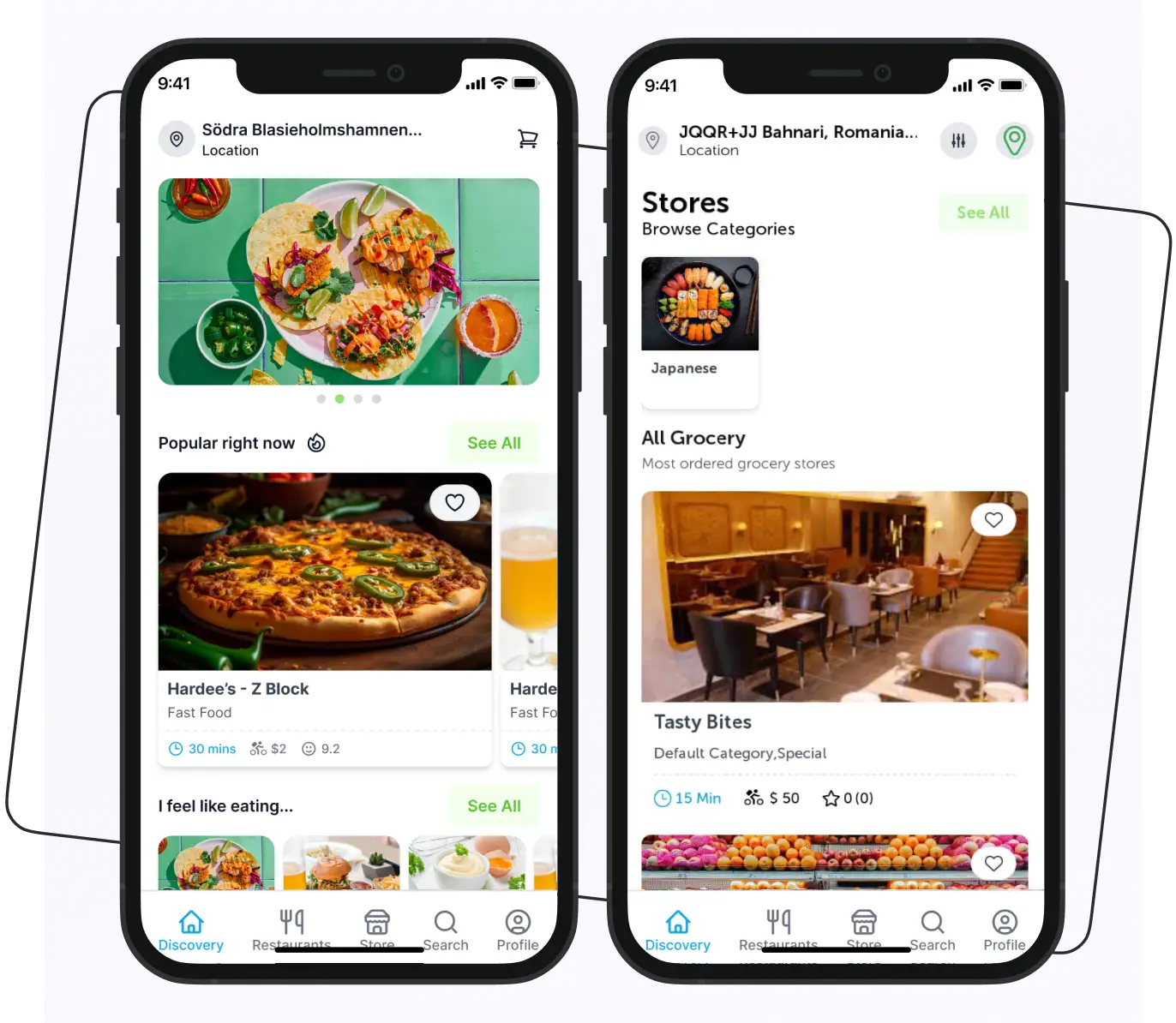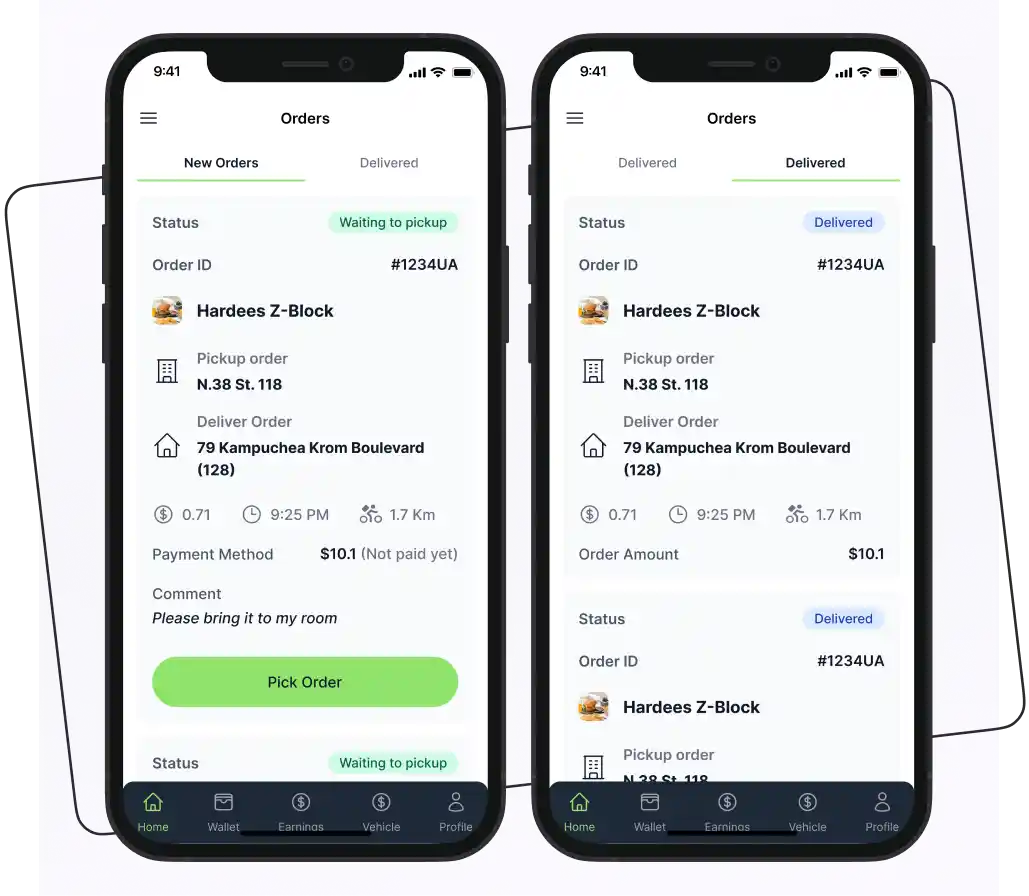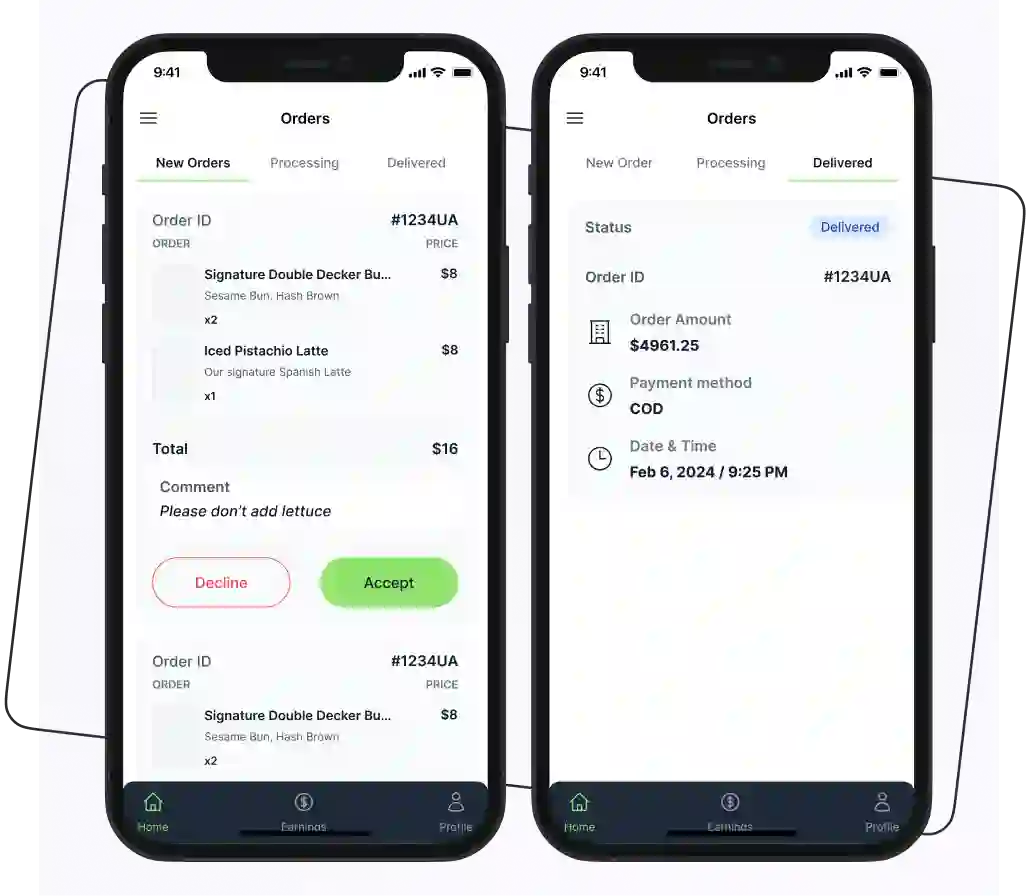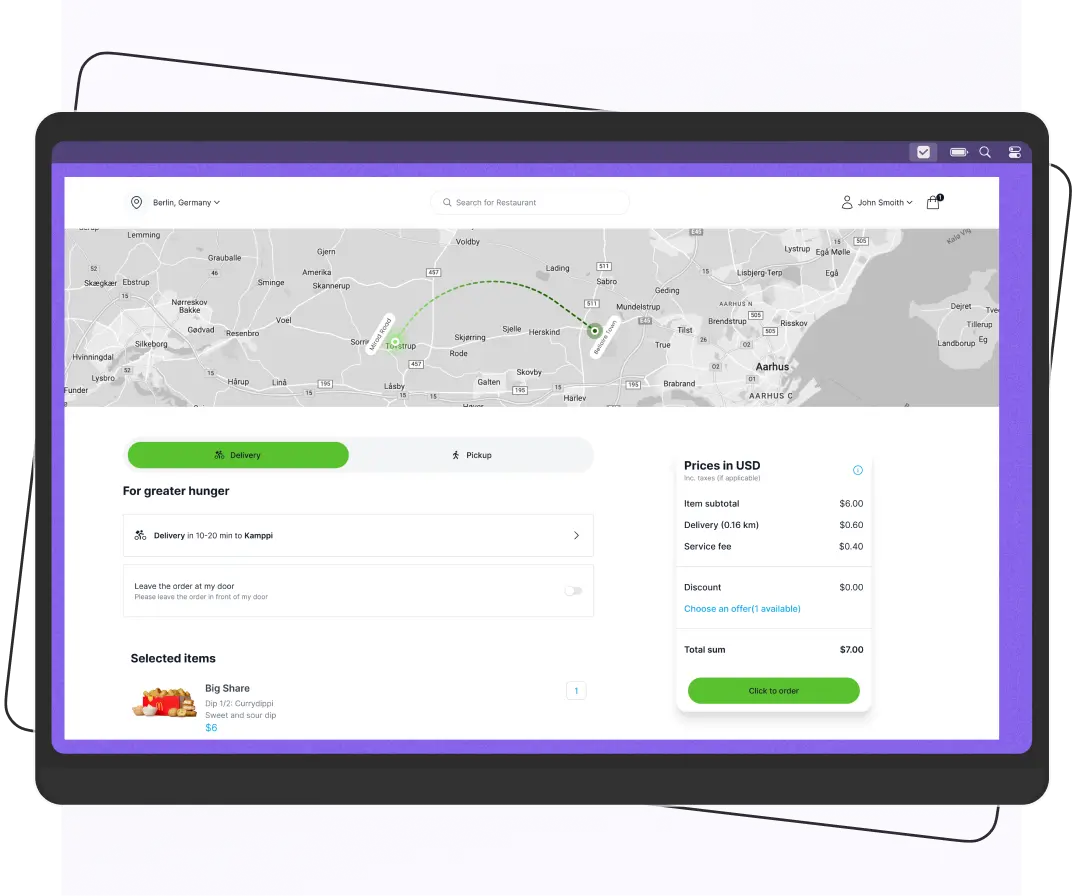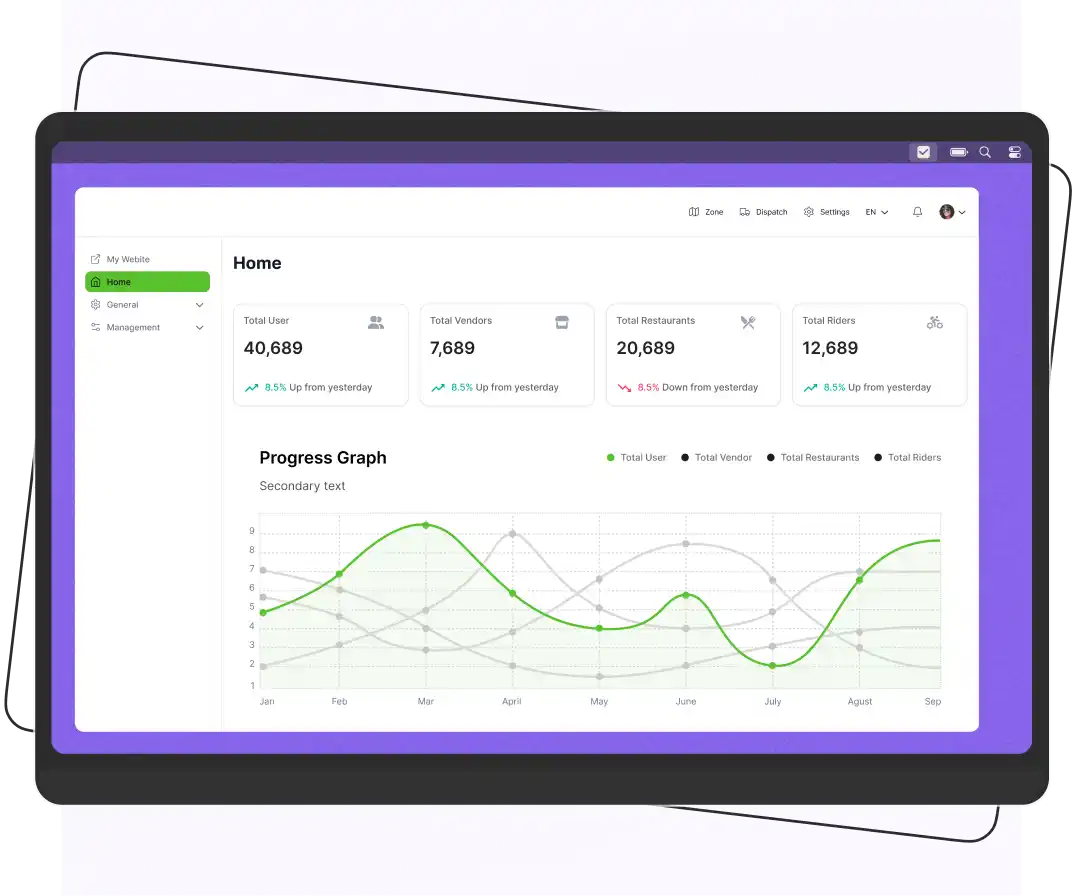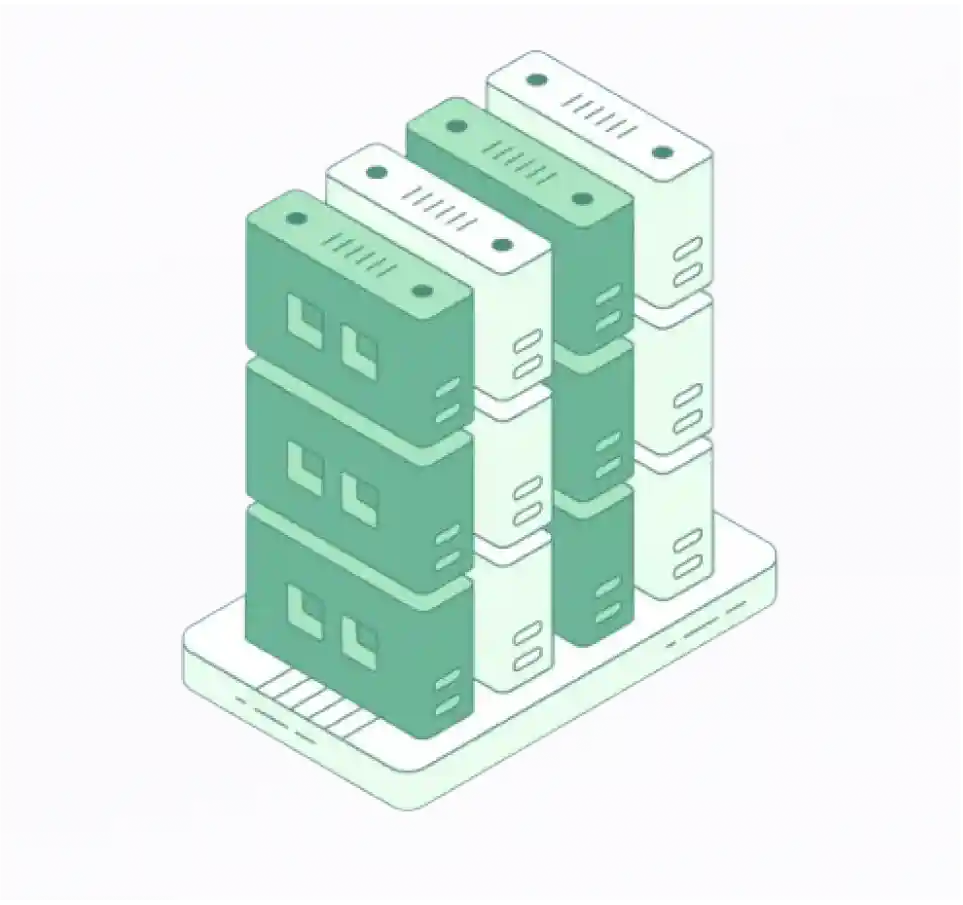
Key Takeaways
- Market Opportunity: The global food delivery market is projected to reach $1.85 trillion by 2029.
- App Models: Choose from Restaurant-to-Consumer, Platform-to-Consumer, or Aggregator models. Each with distinct logistics and revenue strategies.
- Monetization Strategies: Profit through commissions, delivery fees, subscriptions, ads, and premium listings.
- Core Features: Include essential features like real-time order tracking, multi-payment options, in-app chat, and customizable menus to enhance user experience.
- Tech Stack: Build your app using modern tools like React Native, Node.js, MongoDB, Stripe, and Google Maps API.
- Development Cost: The estimated cost to build a food delivery app ranges from $50,000 to $250,000+, depending on features, platforms, and complexity.
- Build Strategy: From idea validation and competitor research to launch and maintenance, follow a structured approach to ensure success.
- Challenges: Be prepared to handle delivery speed, food quality, and pricing balance to keep both users and partners satisfied.
- Success Examples: Apps like UberEats, DoorDash, and Grubhub succeed through innovative business models.
The global food delivery market is growing fast, expected to reach $1.85 trillion by 2029. People want convenience, and on-demand apps have completely changed how we order food. From busy professionals to families at home, millions rely on apps to get their favorite meals delivered in minutes.
This shift isn’t just great for customers, it’s a huge opportunity for restaurant owners, startups, and tech entrepreneurs.
Whether you want to grow your restaurant’s reach or build the next big food delivery platform, now is the perfect time to get started.
In this blog, we’ll walk you through everything you need to know from different app models and must-have features to monetization strategies, development costs, and how to build an app that drives revenue.
So, let’s explore.
What is an On Demand Food Delivery App?
On-demand food delivery apps allow customers to order food online through mobile apps or websites and deliver it to their doorstep. These apps are popular due to their convenience and reliability.
The main purpose of on demand food delivery application development is to:
- Help customers order food easily
- Build brand loyalty among customers
- Help customers communicate with the restaurants directly
- Help food business owners increase their brand visibility and sales rapidly
Food Delivery App Statistics
Let’s explore some facts and figures and know why investing in a food delivery app development is profitable.
- By 2029, the number of food delivery users is expected to reach 78.8 million.
- With more than half of the global market, Asia Pacific had the biggest online meal delivery market value in 2023.
- According to tradingplatforms.com, by 2023, over 2.85 billion people will order food online.
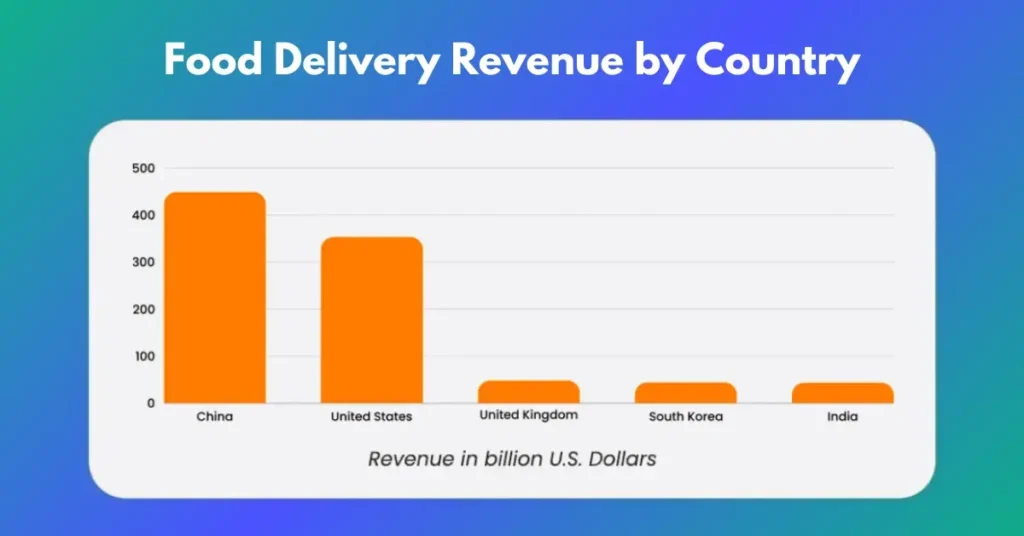
Types of On Demand Food Delivery Apps
Below are the main types of on demand food delivery apps.
Restaurant-to-Consumer Delivery
This type has a separate app for restaurants that customers use to order food. The restaurant is responsible for preparing and delivering the food to the customers.
Example: McDonald’s, Domino’s, KFC, Starbucks, etc.
Platform-to-Consumer
This type gained huge popularity and united several restaurants on a single platform. In this type, the platform manages the delivery process. Plus, the platform charges order commissions and delivery fees from restaurant partners.
Example: UberEats, Enatega, Grubhub, Postmates, DoorDash, etc.
Food Delivery Aggregator Model
This model is a combination of the two above types. The restaurant partner only uses the app to get orders and is responsible for delivery services.
Example: Domino’s uses food delivery apps to take orders, but delivers the food with their riders, handling customer care.
Platform vs Aggregator vs Restaurant App
| Feature | Platform-to-Consumer | Aggregator Model | Restaurant-to-Consumer |
| Delivery Responsibility | Platform (e.g., DoorDash, UberEats handles delivery) | The restaurant handles delivery | The restaurant handles delivery |
| App Ownership | Third-party platform | Shared between the platform and the restaurant | Fully owned by the restaurant |
| Revenue Model | Commissions, delivery fees, and ads | Commissions, restaurant subscriptions | Direct customer payments, lower fees |
| Examples | UberEats, DoorDash, Grubhub | Domino’s (via aggregators), a Local restaurant on Foodpanda | McDonald’s, Domino’s (own app), KFC |
| Profit Margins | Lower (due to commissions) | Medium (shared costs and responsibilities) | Higher (direct-to-customer, no third-party fees) |
Benefits of Developing the On Demand Food Delivery Solution
Developing an on-demand food delivery solution can offer several benefits, such as:
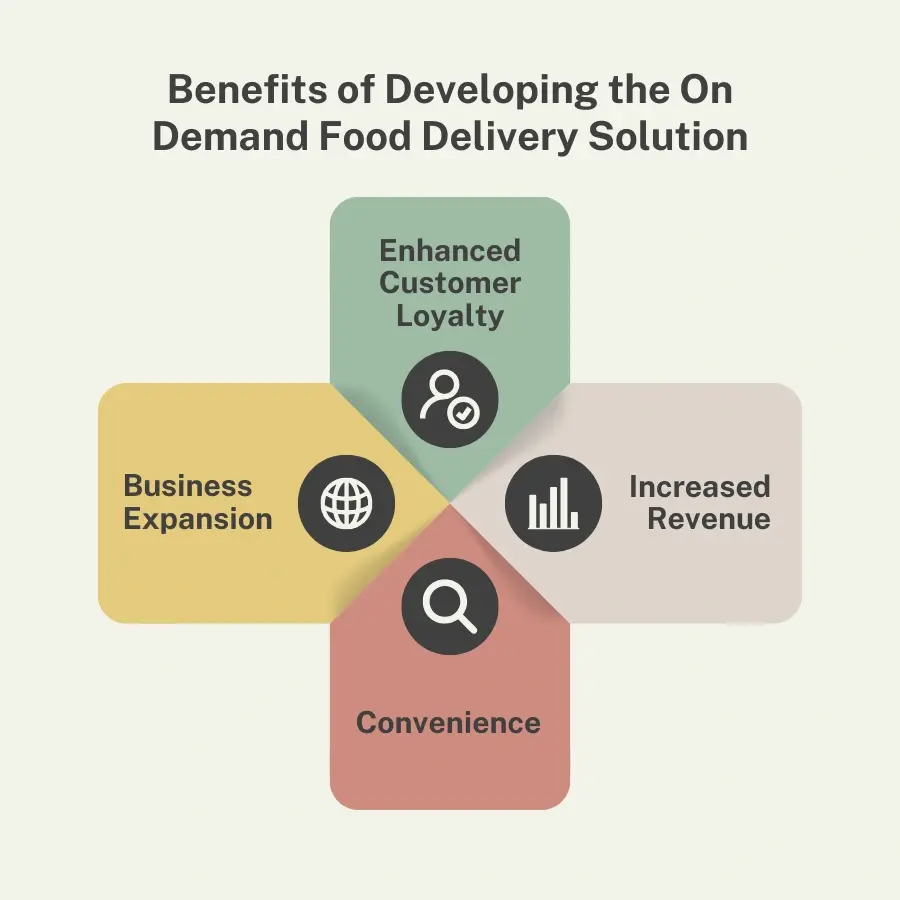
Convenience
On-demand food delivery provides convenience to customers. They can order food from their favorite restaurants and have it delivered to their doorstep without the need to travel or cook for themselves. This convenience factor is particularly appealing in today’s fast-paced lifestyle.
Business Expansion
On-demand food delivery platforms provide an opportunity for restaurants to expand their business. They can serve customers in multiple areas without incurring the costs associated with opening new outlets. This scalability can be particularly beneficial for small and medium-sized restaurants.
Enhanced Customer Loyalty
On-demand food delivery platforms often include loyalty programs, discounts, and personalized recommendations based on customer preferences. These features can help build customer loyalty and encourage repeat orders.
Increased Revenue
On-demand food delivery can help restaurants tap into new revenue streams. They can generate additional income by partnering with delivery platforms and reaching a larger customer base.
Supercharge your deliveries with Enatega.
Launch NowRevenue Models of On Demand Food Delivery App Development
Below are some common revenue models that are used in food delivery app development.

Commission-Based Model
This is one of the most popular revenue models for food delivery apps. The app charges a commission, typically 15-30%, on each order placed through the platform. The commission is taken from the total order value. This allows the app to generate revenue directly from facilitating food delivery transactions.
Subscription or Membership Model
Some food delivery apps offer optional subscription or membership plans for customers. This can provide benefits like waived delivery fees, exclusive discounts, priority support, etc., in exchange for a recurring monthly or annual fee. This gives the app a steady, predictable revenue stream.
Advertising and Promotions
Food delivery apps can generate revenue by selling ad space on their platform to restaurants, food brands, and other relevant advertisers. They may also offer promotional features like highlighted listings or featured deals in exchange for a fee.
Partnerships and Collaborations
Delivery apps can form strategic partnerships with restaurants, grocery stores, or other businesses. This could involve revenue-sharing arrangements, white-label services, or bundled offerings that create new revenue streams.
Features of On-Demand Food Delivery App Development
Below are the main features of an on-demand food delivery app that can be categorized into four types of users.
- Customers
- Restaurant
- Rider
- Admin
Let’s discuss them in detail.
Customers
| Features | Description |
| Registration | Registration helps customers create their profile with their name, password, email, and phone number. Another way is to link your social media accounts like Facebook, Google, Instagram, and Twitter for registration. |
| Restaurant Search | It is the vital feature of the on demand food delivery solution. Customers can select the restaurant and view the menu of different categories with visually appealing images, user reviews, and other information. |
| Payment Modes | Customers can pay with various payment methods, such as credit/debit cards, cash on delivery, or digital wallets. |
| Pickup Location | Customers can manually add their address, use GPS for automatic recognition, and directly set their pickup location. |
| Customization | Customers can customize their menu according to their needs. For example, some people are allergic to meat or have digestion problems, so they add special instructions. |
| Feedback and Reviews | The users can provide access to feedback and reviews to make an informed decision. Also, they can give positive or negative feedback based on their overall experience to help future customers know which restaurant is more reliable for placing an order. |
| Deals and Discounts | Users receive notifications and emails regarding discounts and new offers. |
| Order Tracking | The order tracking feature allows users to observe the delivery progress in real-time, from meal preparation to delivery. The rider’s route can also be tracked through Google Maps integration and the smartphone’s GPS. |
| Loyalty and Reward Program | The loyalty and reward programs have shown a significant impact on the users. They encourage people to become regular customers. |
| In-app Chat | The in-app chat feature allows customers to communicate with riders about their orders. |
Restaurant
| Features | Description |
| Dashboard | The dashboard allows restaurant owners to access the order details and track the number of received, pending, and completed orders. |
| Content Management | The content management feature helps restaurant owners add or edit information, including the restaurant name, contact information, menus, photos, etc. |
| Order Management | This feature of on demand food delivery app solution is essential. It provides restaurants with detailed information about current orders and allows them to send notifications to customers. |
| Receive Payments | The payment option in restaurant on-demand apps provides an extra layer of transaction fairness protection since restaurants typically receive payment after customers receive their orders. |
Rider
| Features | Description |
| Registration | The rider creates an account or receives the credentials to use the dashboard. |
| Profile Management | On the rider app, riders add their general information like name, photo, and working hours. |
| Order Status | The rider can update their delivery status (approved, disapproved, picked, and delivered) |
| Order History | The rider can review their delivery history, like which orders are completed and pending. |
| Route Optimization | Route optimization can help the rider find the shortest route by considering the traffic congestion and transport type. It helps riders deliver the food on time. |
| Notification | With push notifications, the riders get a notification from the restaurant when the order is ready to pick up. The rider informs customers that their food is on the way. |
| Contact Restaurant/User | Riders can directly contact the restaurant and customers in case of an emergency. |
Admin
| Features | Description |
| Control all the Data | The admin can control all the data in the application. They have the right to add, edit, or remove users. |
| Add/Block | With this feature, the admin can add/edit/delete/block features. |
| Usage Analytics | The admin can review real-time user search journeys. Data collection, analysis, presentation, and visualization help admins improve user engagement, product life cycle, and more. |
Technology Stack for On-Demand Food Delivery App Development
You must know the technologies to create a successful food delivery app like Grubhub, Uber Eats, and DoorDash.
The table below helps you select the right technology for your app.
| Front-end Technologies | |
| Category | Technologies |
| User Interface | HTML5, CSS3, JavaScript |
| Framework | React Native or Flutter |
| Programming Languages | Swift (for iOS) and Kotlin/Java (for Android) |
| Back-end Technologies | |
| Category | Technologies |
| APIs | RESTful APIs |
| Database | MongoDB, MySQL, or PostgreSQL |
| Programming Languages | Python (Django or Flask), Node.js, Java, or Ruby (Ruby on Rails) |
| Third-party Integrations | |
| Category | Technologies |
| Payment Gateway Integration | PayPal, Stripe, Braintree |
| Geolocation | Google Maps API, Mapbox |
| Analytics | Google Analytics, Mixpanel |
How Does On Demand Delivery Work?
Here is a workflow of how on-demand delivery works.
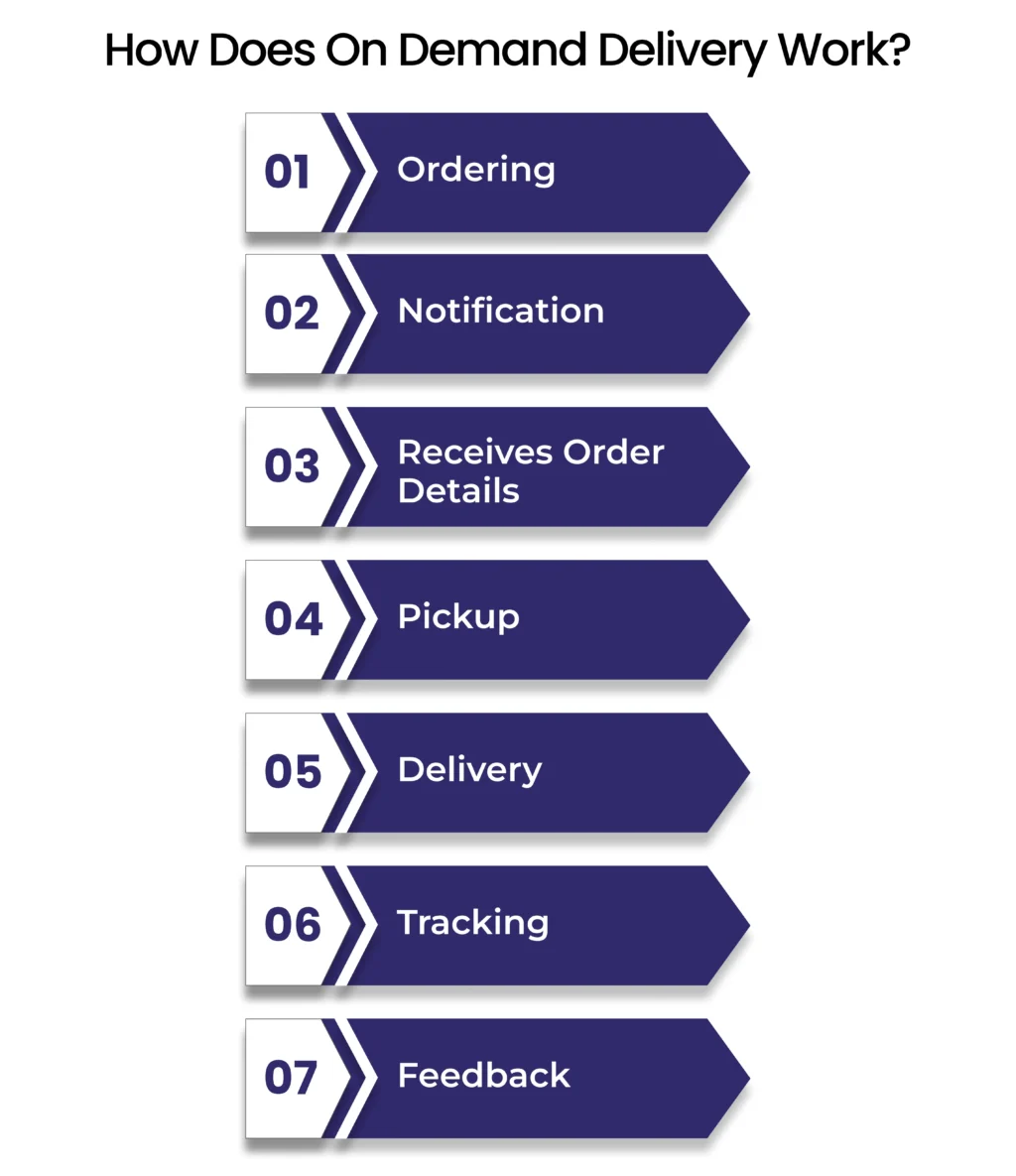
Ordering
Customers use a mobile app or website to browse available products or services and place an order. They may need to create an account and provide relevant details such as their location, payment information, and contact details.
Notification
Once the order is confirmed, the customer receives a notification containing information about the order, estimated delivery time, and other relevant details. The notification is typically sent via email, SMS, or through the mobile app.
Business Receives the Order Details
The delivery service provider or the business offering the service receives the order information
Pickup
The assigned delivery person arrives at the pickup location and collects the order. They may verify the order details and ensure that everything is in order before proceeding with the delivery.
Delivery
The delivery person transports the order to the customer’s specified location.
Tracking
Many on-demand delivery services provide real-time tracking features that allow customers to monitor the progress of their delivery. Customers can often track the location of the delivery person and receive updates on the estimated time of arrival.
Feedback
Customers have the option to provide feedback or rate the delivery experience.
How to Create an On-Demand Food Delivery App?
Building an on-demand food delivery app can be complex, but by following the steps below, you can easily create the best online food delivery app.

1. Understand your Business Idea
First, you must understand your business idea and vision. You have to brainstorm and write your ideas on paper for your online food delivery app. This includes the user interface, features, business model, and more.
2. Research
Conduct thorough research and understand the food delivery industry. In this phase, you know these things clearly:
- The target audience
- Analyze the latest market trends
- Know about your competitors (their strengths and weaknesses)
- Identify your business model
Keep in mind that proper research can help you make a reliable and robust food delivery app.
3. Decide the Features
After the research, decide on the features that you want to add to your food delivery app. To make your app stand out from the competitors, you must add those features that are not included in the app. You can easily build a successful food delivery platform when you understand your features.
4. Know the Monetization Strategies
Many well-known food delivery apps like DoorDash and Uber Eats are built using multiple monetization strategies. Here, we list the most popular ones for an online food delivery platform.
Commission fee: Platform owners can charge restaurants a percentage of the total order value through their on-demand food delivery service.
Delivery fee: The platform can charge customers a delivery fee for orders.
Featured listing: The platform offers sponsored listings to restaurants.
Advertising fee: Platform owners can make money via advertising.
Paid Passes: It is a new monetization strategy implemented by some online food delivery apps. For example, DoorDash offers DashPass for a monthly or annual price, which includes free delivery and unique discounts.
5. Develop the App
When the app design is finalized, start developing the app. Code the main app functionality and integrate all the required features. Keep in mind that the app should be optimized and run smoothly.
Another option is to select a ready-made food delivery management software and customize it according to your needs.
6. Testing the App
When the app is developed, it should be tested for all bugs and errors. Testing should be done on different devices to ensure the app is accessible to all customers.
7. Launch the App
When the app is developed and tested, the next step is to launch the app. Follow all the guidelines and make sure the app is well-executed.
8. Maintenance and Update
The app should be regularly monitored and updated to meet all the customers’ needs. Update the app according to the customer’s needs and improve the app functionality for better performance.
On Demand Food Delivery App Development Cost
How much does it cost to develop an on-demand app?
An on-demand food delivery app can range anywhere from $50,000 to over $250,000 to develop, depending on the specific requirements and choices made. Working with an experienced development partner can help optimize the costs.
Here is the estimated cost to develop an on-demand food delivery app.
| Factor | Cost Impact |
| Development Approach | $50,000 – $250,000+ |
| Features | Increases with complexity |
| Platforms | $10,000 – $50,000 per platform |
| Technology Stack | Varies widely |
| Complexity | $10,000 – $100,000+ |
| UI/UX Design | $5,000 – $50,000+ |
| Project Scope | $20,000 – $200,000+ |
| Total Development Cost Range: $50,000 – $250,000+ | |
Examples of Successful Food App Development Projects
Here are some examples of successful food app development projects.
Uber Eats
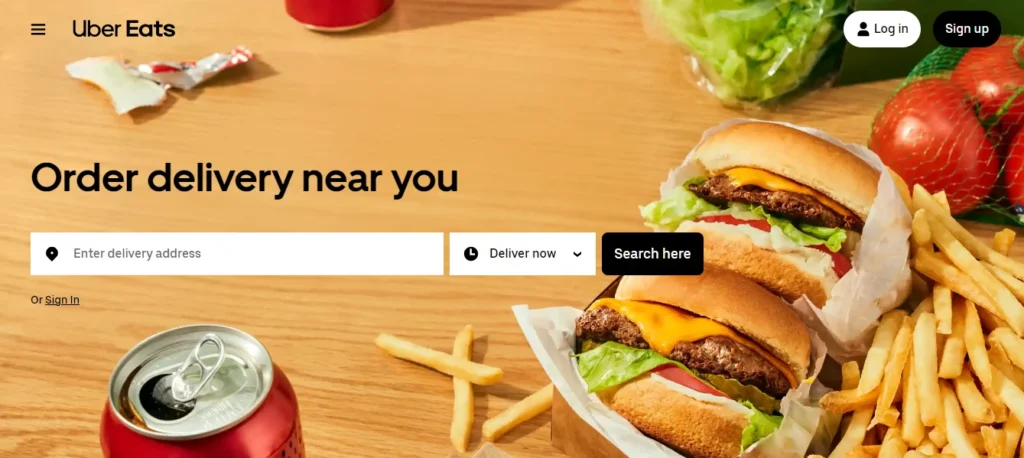
Uber Eats is one of the most successful food delivery apps, with over 66 million monthly active users worldwide. It allows users to order food from local restaurants and have it delivered to their location.
The key to Uber Eats’ success has been its large network of restaurant partners, efficient delivery logistics, and seamless user experience.
DoorDash
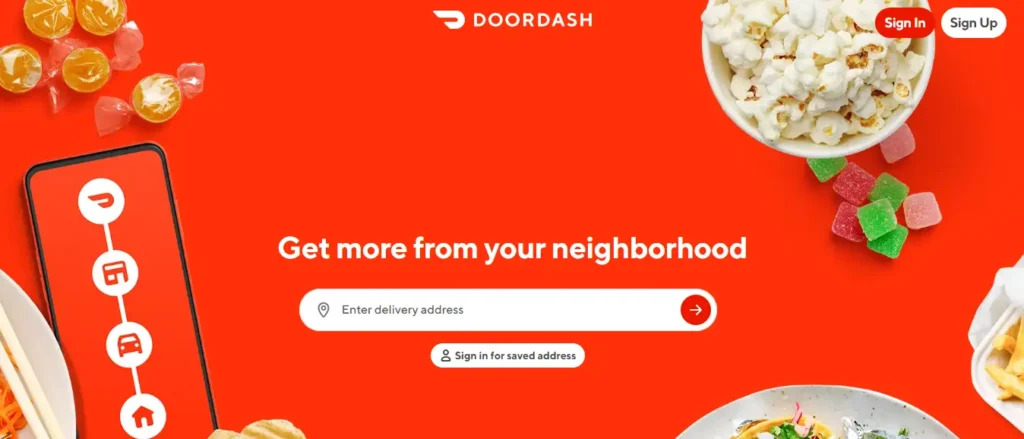
DoorDash is another major player in the food delivery market, with over 20 million active users. It has grown rapidly by focusing on suburbs and smaller cities underserved by competitors.
DoorDash’s use of gig workers for deliveries and data-driven optimization of routes has been critical to its business model. DoorDash alternatives are also available for business owners.
Grubhub
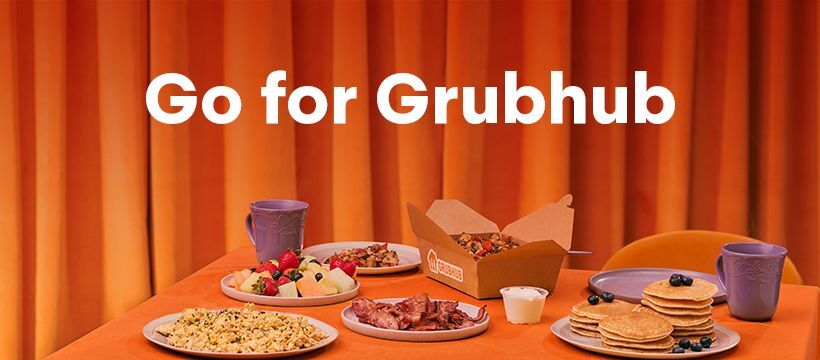
Grubhub was an early pioneer in the online food ordering industry, launching in 2004. It has maintained its leadership position by continually improving its app, expanding its restaurant partnerships, and providing valuable data and analytics to restaurant owners.
Instacart
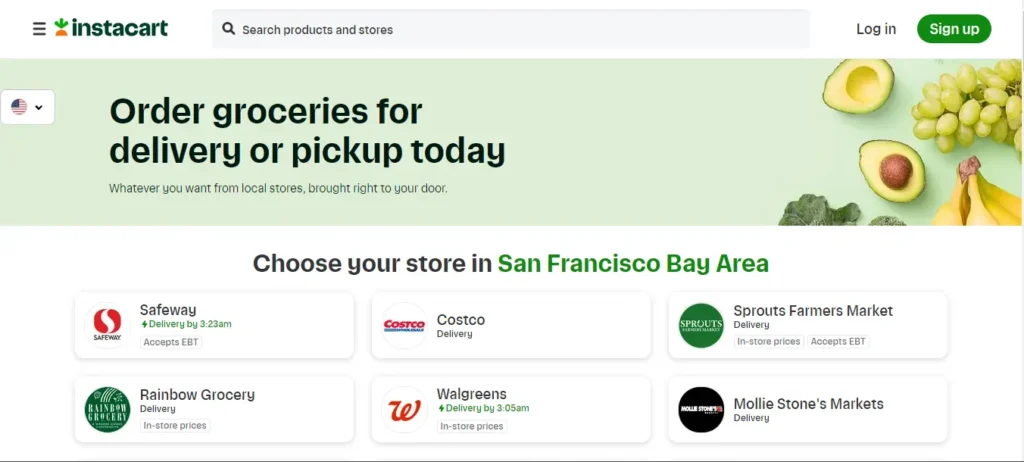
Instacart is best known as a grocery delivery service, but it also allows users to order prepared meals and grocery items from local stores. Its strength lies in its ability to efficiently fulfill orders through a network of personal shoppers.
Challenges of Building the On Demand Food Delivery App
Building an on-demand food delivery app comes with several challenges that can impact both customer satisfaction and business profitability.
Let’s discuss these challenges.
| Challenges | Solution |
| Delivery Charges: One of the primary challenges businesses face is managing delivery charges. Striking a balance between customer satisfaction and profitability can be difficult, as high delivery fees may deter customers, while low fees can eat into profit margins. | To address this issue, it’s essential to establish pricing that is both fair to customers and sustainable for the business. Implementing a tiered pricing model based on distance or order size can be an effective way to balance these factors. |
| Food Quality: Another challenge is maintaining consistent food quality. Variability in food preparation and delivery can lead to customer dissatisfaction. | To combat this, businesses should establish strict quality control standards that all participating restaurants must adhere to. Regular audits and feedback loops can help ensure that food quality remains high throughout the delivery process. |
| Delivery Speed: Delivery speed presents another major hurdle. Increased operational costs, including fuel, labor, and maintenance, can complicate timely deliveries. | To enhance delivery speed, incorporating a route optimization feature into the app can improve efficiency. This feature allows riders to choose the quickest routes, ensuring that meals arrive hot and fresh. Also, it enhances customer satisfaction. |
| Customer Expectations: Meeting customer expectations is vital in a competitive market. As customer preferences change, businesses must stay updated on these changes to maintain relevance and satisfaction. | Conducting thorough market research and gathering information about target customer preferences can help businesses tailor their services. By aligning offerings with customer needs and current trends, companies can better meet expectations and build loyalty in a growing industry. |
Frequently Asked Questions
1. Who offers the best food delivery app development services?
Enatega provides the best food delivery app development services. They have experience serving several clients in the food delivery industry.
2. What are the top 3 food delivery apps?
The top 3 food delivery apps are:
- UberEats
- DoorDash
- Grubhub
3. How to create a food app?
Below are some steps to help you create a food app.
- Validate the food delivery app idea
- Select the food delivery app method
- Determine the food delivery business model
- Identify the app features
- Design and development
- Marketing and launch
4. What should be included in a food app?
Here are some key features that could be included in a useful food app:
- Offline functionality
- Order tracking
- Social features
- Order customization
5. How do on-demand app development solutions help?
An on-demand app development solution helps customers and businesses in several ways, such as:
- Users can access services and products with just a few taps on their mobile devices.
- Apps provide immediate access to services, allowing users to request and receive help quickly.
- Businesses can reduce operational costs by automating processes and minimizing the need for physical infrastructure.
- On-demand apps can easily scale to accommodate growing user demand and expand service offerings.
- On-demand apps allow businesses to explore various revenue streams, such as subscription models or pay-per-use.
6. What is the most profitable food delivery app?
DoorDash is considered to be the most profitable food delivery app in the USA as compared to popular apps like Uber Eats and Grubhub.
7. How profitable are food delivery apps?
Food delivery apps can be highly profitable, earning revenue through delivery fees, commissions from restaurants, and subscriptions.
8. Which food delivery makes the most money?
DoorDash is the highest-grossing food delivery app in the U.S., followed by Uber Eats and Grubhub. DoorDash’s extensive market partnership contributes to its revenue.
9. What age group uses food delivery apps the most?
The age group that uses food delivery apps the most is 18 to 34 years old.
10. How long does it take to develop an app?
The time to develop an app ranges from a few weeks to several months, depending on complexity, features, and team size.
Supercharge your deliveries with Enatega.
Launch NowConclusion
The development of on demand food delivery apps opens endless possibilities for restaurant owners. It helps you grow your business and expand your customer base. Also, you can position yourself as a leader in a competitive market.
So, if you want to create an on demand food delivery app, consult a reliable on-demand food app development company like Enatega. We have experience creating apps like Foodpanda, UberEats alternative apps, and more that drive revenue for your business.
Want to launch your Uber Eats? Book a free demo with us and get the best food delivery solution for your business.













 IOS
IOS Android
Android Web
Web